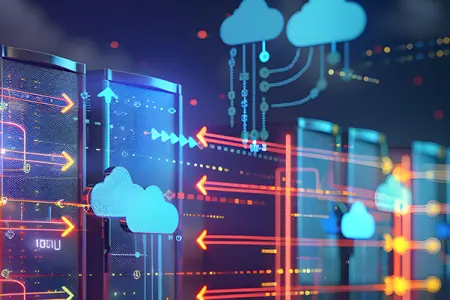
The DRaaS Spectrum: Which Type Is Right for You?
What Is DRaaS?
Disaster Recovery as a Service (DRaaS) is one deployment method for disaster recovery. It used to involve bringing a datacenter to you on the back of a large truck and uploading your data to it. Old-fashioned as that sounds, this cumbersome and time-consuming process was once the gold standard for disaster recovery services—it saved organizations from potentially suffering even longer outages and excessive data loss.
With the rise of cloud computing, the DRaaS solution has re-invented itself. Instead of a loud truck idling outside your office, the noise created by cloud disaster recovery services now comes from confusion over the plethora of services available, but the right one exists to suit any organization’s requirements.
DRaaS providers fall across a spectrum, rather than into clearly defined categories, and this article will explore three key options for DRaaS on this spectrum. But the key word for disaster recovery services is flexibility: with a multitude of DRaaS providers available, a perfect fit for your organization may fall outside the options outlined below.
Self-Service DRaaS
What it is: When offered on a self-service basis, the DRaaS provider has target infrastructure available in the event of a disaster, along with the necessary tooling and supporting documentation. The self-service part means your organization carries responsibility for initial setup and for ongoing maintenance and monitoring. In other words, the DRaaS provider ensures their infrastructure and tooling is working correctly but that’s it—they don’t own full responsibility for the whole solution. Your organization must handle testing, at whatever intervals you decide, and create and maintain all the runbooks and other processes.
Best for: This model suits organizations who already have large IT teams with the skills and ability to execute a DR strategy. For these organizations, self-service DRaaS helps execute a geo-disperse strategy or a move to a consumption-based model or to OPEX Spending.
Partially Managed DRaaS
What it is: The next step on the spectrum, a partially managed DRaaS solution offers a shared responsibility model. The DRaaS provider performs initial setup and some ongoing maintenance and monitoring while your organization can interact with the service and access some functionality. Why do so many organizations like this model? It gives them piece of mind and a more tailored approach to their DR strategy.
Best for: Service providers often recommend this model for organizations that lack large IT teams or the in-house skills for successful disaster recovery. An organization that wants their IT teams to focus on other business priorities and objectives also benefits from this model. As a side note, tooling in this model is normally chosen by the DRaaS provider, but an organization can select the tooling they want, according to their recovery goals.
Fully Managed DRaaS
What it is: On the other end of the spectrum from self-service lies the fully managed DRaaS solution, where the DRaaS provider takes sole responsibility for the entire outcome of the service. In this model, financial SLAs may underpin the recovery metrics, including the Recovery Point Objective (RPO) and Recovery Time Objective (RTO). In this model, the DRaaS Provider does it all: design, implementation, maintenance monitoring, testing, and invocation.
Best for: This model is ideal for organizations who have limited—or no—IT resources or disaster recovery skills. This also works best for organizations who don’t have secondary or tertiary sites to act as disaster recovery locations or who want the security of guaranteed SLAs for disaster recovery.
How Does Zerto Fit into DRaaS?
Over 350 service providers choose Zerto to power their DR offerings because Zerto empowers them to recover from any outage—including ransomware—in just minutes. Zerto gives DRaaS providers the ability to rewind data to seconds prior to an incident. It also helps de-risk DR and ransomware strategies with testing that is non-intrusive as well as fully automated and orchestrated.
Don’t be left behind, waiting for a datacenter to pull up on a truck. Visit Zerto Disaster Recovery as a Service to learn more and find a Zerto Partner to jumpstart your DRaaS journey today.
 Chris Rogers
Chris Rogers


